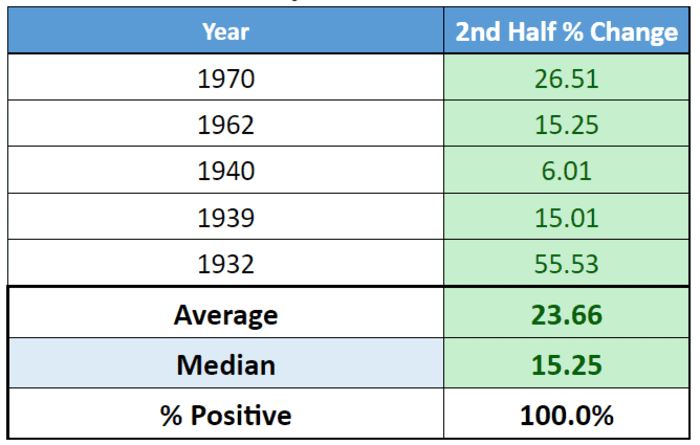This bear has claws.
A bear market that began on the first trading day of 2022 drove down the S&P 500 for its worst first six months to a calendar year in 52 years as investors head into the second half fearing aggressive monetary tightening by the Federal Reserve and other major central banks could tip the economy into recession.
The S&P 500
SPX,
fell 20.6% year-to-date through Thursday’s close, marking its biggest first-half decline since a 21.1% fall in 1970, according to Dow Jones Market Data. The large-cap benchmark is down 21.1% from its record finish on Jan. 3. The index earlier this month first ended more than 20% below that early January record, confirming that the pandemic bull market — as widely defined — had ended on Jan. 3, marking the start of a bear.
The S&P 500 has bounced around 3.2% off its 2022 low close of 3,666.77 set on June 16.
Data compiled by Dow Jones Market Data shows that the S&P 500 has bounced back after past first-half falls of 15% or more. The sample size, however, is small, with only five instances going back to 1932 (see table below).

S&P 500 second-half performance after a first-half fall of 15% or more
Dow Jones Market Data
The S&P 500 did rise in each of those instances, with an average rise of 23.66% and a median rise of 15.25%.
Read: Stagflation, reflation, soft landing or a slump: What Wall Street expects in the second half of 2022
Investors, however, may also want to pay attention to metrics around bear markets, particularly with the will-it-or-won’t-it speculation around whether the Federal Reserve’s aggressive tightening agenda will sink the economy into recession.
Indeed, an analysis by Wells Fargo Investment Institute found that recessions accompanied by a recession, on average, lasted 20 months and produced a negative 37.8% return. Bear markets outside a recession lasted 6 months on average — nearly the length of the current episode — and saw an average return of -28.9%. Taken together, the average bear market lasted an average of 16 month and produced a -35.1% return.
Other major indexes are also set to log historic first-half declines. The Dow Jones Industrial Average
DJIA,
fell 15.3% through Thursday, its worst first half since a 23.2% drop in 1962.
Deep Dive: Wall Street’s favorite stock sector has potential upside of 43% as we enter the second half of 2022
As the table below shows, the second-half performance for the blue-chip gauge after first-half declines of 10% or more are variable. The most recent incident, in 2008 during the worst of the financial crisis, saw the Dow drop another 22.68% in the second half of the year.

DJIA second-half performance after 10% fall in first half
Dow Jones Market Data
In the 15 instances, the Dow rallied in the second half two-thirds of the time, producing an average second-half rise of 4.45% and a median gain just shy of 7%.
The tech-heavy Nasdaq Composite
COMP,
dropped more than 29% for the first half, its largest such drop on record. There was little to go on when Dow Jones Market Data looked back at first-half drops of at least 20% for the gauge.
There were only two instances — 2002 and 1973 — and both saw the Nasdaq keep sliding over the remainder of the year, falling around 8.7% over the second half in both instances.
Also see: Major bond ETFs on pace for worst first half to a year on record









